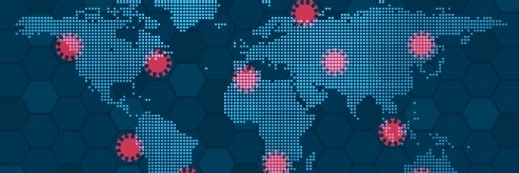
Getty Images
WHO Launches Global Infectious Disease Surveillance Network
The World Health Organization’s International Pathogen Surveillance Network will leverage pathogen genomics data to detect and prevent infectious disease threats.
The World Health Organization (WHO) launched the International Pathogen Surveillance Network (IPSN), a public health network to prevent and detect infectious disease threats before they become epidemics or pandemics.
IPSN will rely on insights generated from pathogen genomics, which helps analyze the genetic material of viruses, bacteria, and other disease-causing micro-organisms to determine how they spread and how infectious or deadly they may be.
Using these data, researchers can identify and track diseases to improve outbreak prevention, response, and treatments.
“The goal of this new network is ambitious, but it can also play a vital role in health security: to give every country access to pathogen genomic sequencing and analytics as part of its public health system,” said WHO Director-General Tedros Adhanom Ghebreyesus, PhD, in the press release. “As was so clearly demonstrated to us during the COVID-19 pandemic, the world is stronger when it stands together to fight shared health threats.”
Genomics capacity worldwide was scaled up during the pandemic, but the press release indicates that many countries still lack effective tools and systems for public health data collection and analysis. This lack of resources and funding could slow the development of a strong global health surveillance infrastructure, which IPSN aims to help address.
The network will bring together experts in genomics and data analytics to optimize routine disease surveillance, including for COVID-19. According to the press release, pathogen genomics-based analyses of the SARS-COV-2 virus helped speed the development of effective vaccines and the identification of more transmissible virus variants.
“Global collaboration in pathogen genomic surveillance has been critical as the world fights COVID-19 together,” said Rajiv J. Shah, MD, president of The Rockefeller Foundation, an IPSN partner. “IPSN builds upon this experience by creating a strong platform for partners across sectors and borders to share knowledge, tools, and practices to ensure that pandemic prevention and response is innovative and robust in the future.”
The IPSN is made up of three operational bodies that gather various public health stakeholders to collaborate on pathogen genomics and disease surveillance challenges: Communities of Practice (COPs), the Country Scale-Up Accelerator (CSUA), and the Funders Forum.
COPs are designed to advance innovation and harmonization in pathogen genomics; CSUA is tasked with enabling and scaling up countries’ capacity building in disease surveillance; the Funders Forum is charged with coordinating donors and funding for the IPSN’s work.
These efforts are part of WHO’s 10-year genomic surveillance strategy, which was announced last year to strengthen the use of genomic surveillance for pathogens worldwide.
Genomic surveillance is just one of the areas in which WHO is launching analytics-related initiatives.
Last month, the organization shared the launch of its Health Inequality Data Repository (HIDR), the largest global data repository on population health and health disparities to date.
The repository contains metrics for more than 2,000 population health indicators broken down using 22 dimensions of inequality, sourced from just under 11 million data points.
With these, WHO hopes to track health disparities across populations and improve outcomes.






